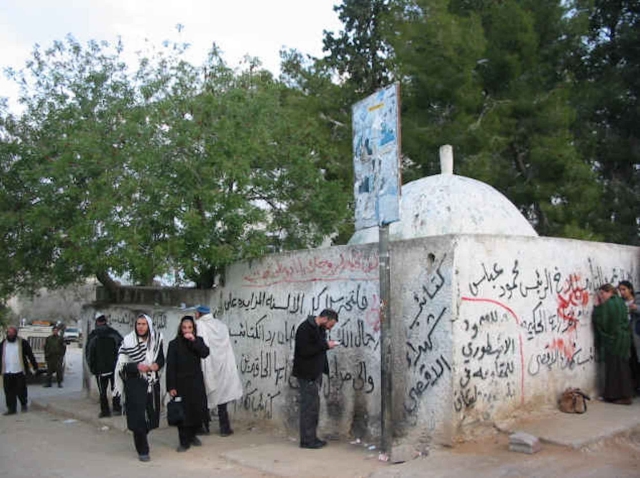Thousands of Jewish worshipers visited the graves of Joshua Ben Nun and Caleb Ben Yefuna in the village of Kifel Hares in Samaria on the occasion of the revelry for Joshua which is marked every year in the Jewish calendar on the 26th of Nisan which is attributed to the day of his death.
The entrance and prayer services at the tomb complex took place under the leadership of the Samaria Regional Council and the administration of Joseph's Tomb and the Council's Holy Places and with the escort and security of the Israel Defense Forces and security forces.
אלפים פקדו את קבר יהושע בן נון בכפר כיפל חארס בשומרוןhttps://t.co/iYecMGskZ3
— 🇮🇱💙 MivzakLive News - חדשות מבזק לייב (@mivzaklive) April 17, 2023
The worshipers recited prayers that are thought to be composed by Joshua during his time conquering the land of Israel back from the hands of Canaanites. The head of the Samaria Regional Council, Yossi Dagan, greeted the thousands who came and said: "In the spirit of Yehoshua Ben Nun [Hebrew pronunciation for Joshua], our enemies were told that the people of Israel are strong, steadfast and will inherit the land despite all the challenges. I thank the IDF forces, Brigadier General Ephraim Mordi Weiss, the police of the Samaria region, the team of the Samaria Regional Council, and the people of the Administration of Joseph's Tomb and the Holy Places in the council headed by Nathaniel Shanir and to the thousands who came to honor Yehoshua ben Nun."
The tomb of Joshua is a building identified according to Samaritan and Arab traditions as the burial place according to multiple local traditions. Nearby is another tomb, attributed to his father, Nun. The grave is in the Palestinian village of Kifel Harath about 1 km northwest of the Israeli city of Ariel. The site is identified with the biblical village of Hares Tamnat, which is indicated in the Bible as the burial place of Joshua and where the modern Arab village gets its name. However, some identify the Hares Tamnat with Harvat Tamna, in the area of the Israeli Neve Tsuf settlement also in Samaria.
Thousands of worshipers visit Joshua's Tomb: Thousands participate in year's largest army-protected entrance to tomb of Joshua Bin Nun in Samaria at night. https://t.co/Rl3qlT4IkL ArutzSheva pic.twitter.com/FwlrHJhks1
— Jewish Community (@JComm_NewsFeeds) May 1, 2019
Although no archaeological excavations have taken place in the area, in order to not disturb the holiness of the site for both Muslims and Jews, some elements of the grave itself match depictions from the bible on how Joshua was buried. In 1968, a year after the Six-Day War, the IDF’s Chief Rabbi’s office recognized the site as the official burial place of Moses’s right-hand man.


